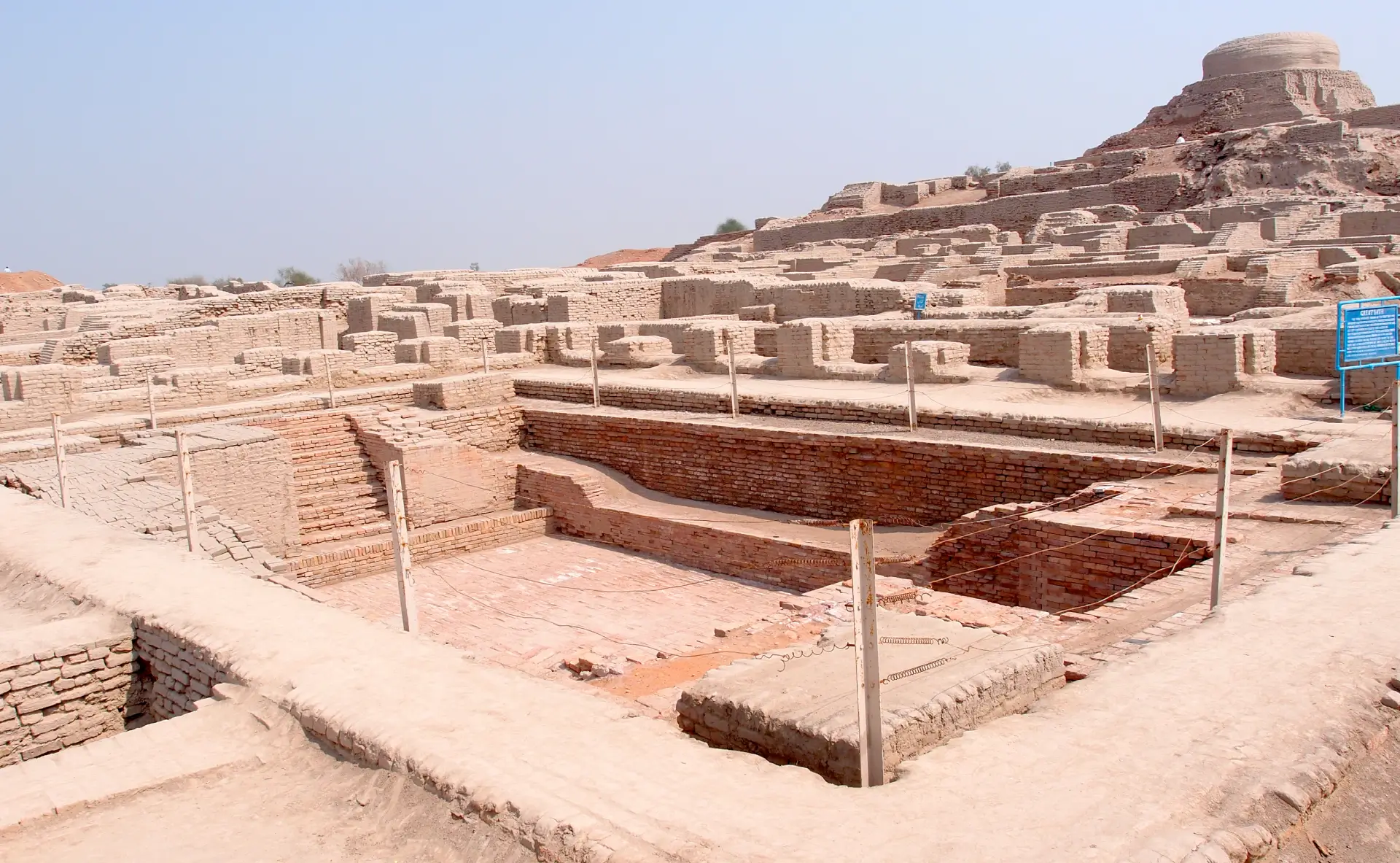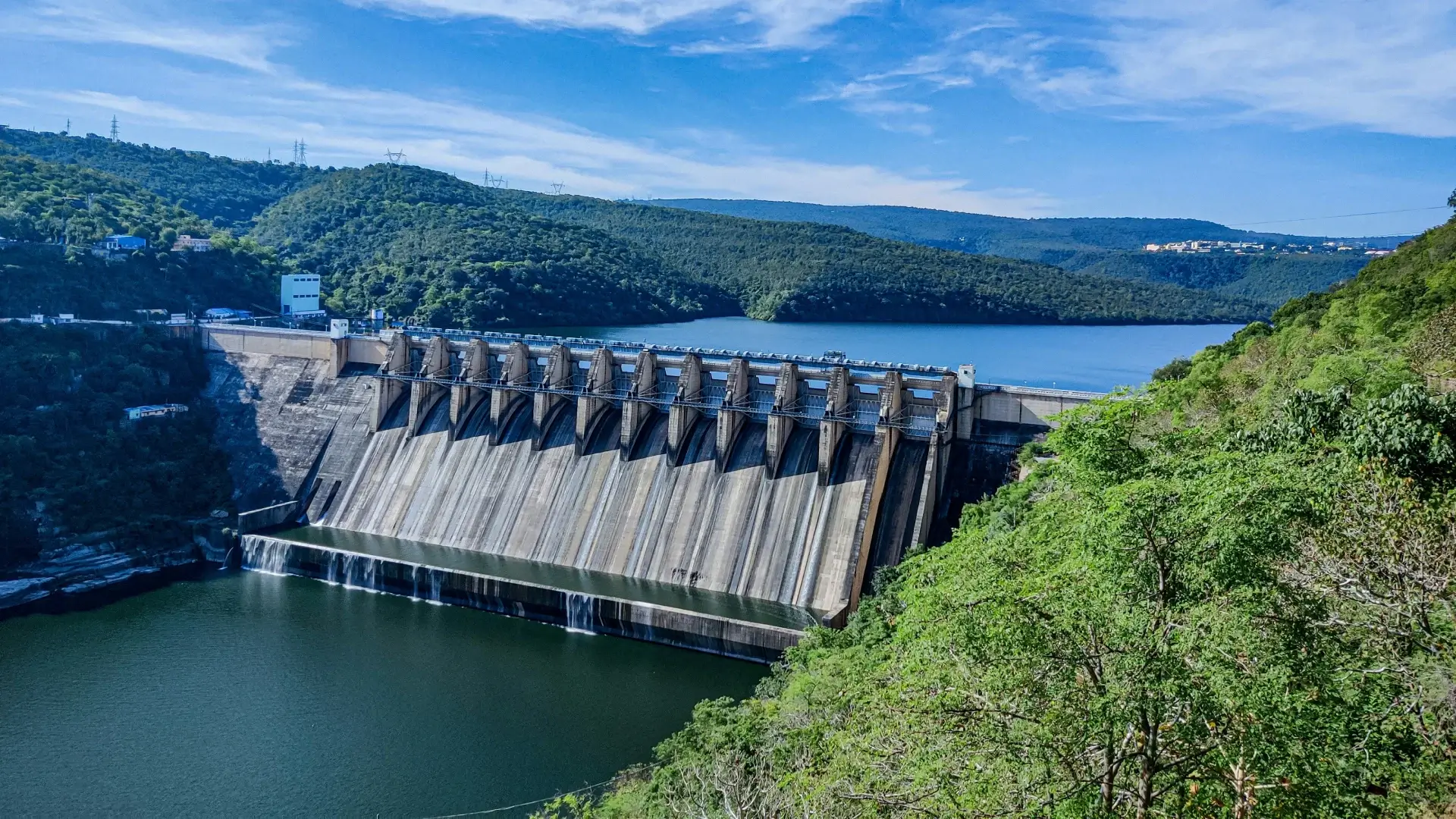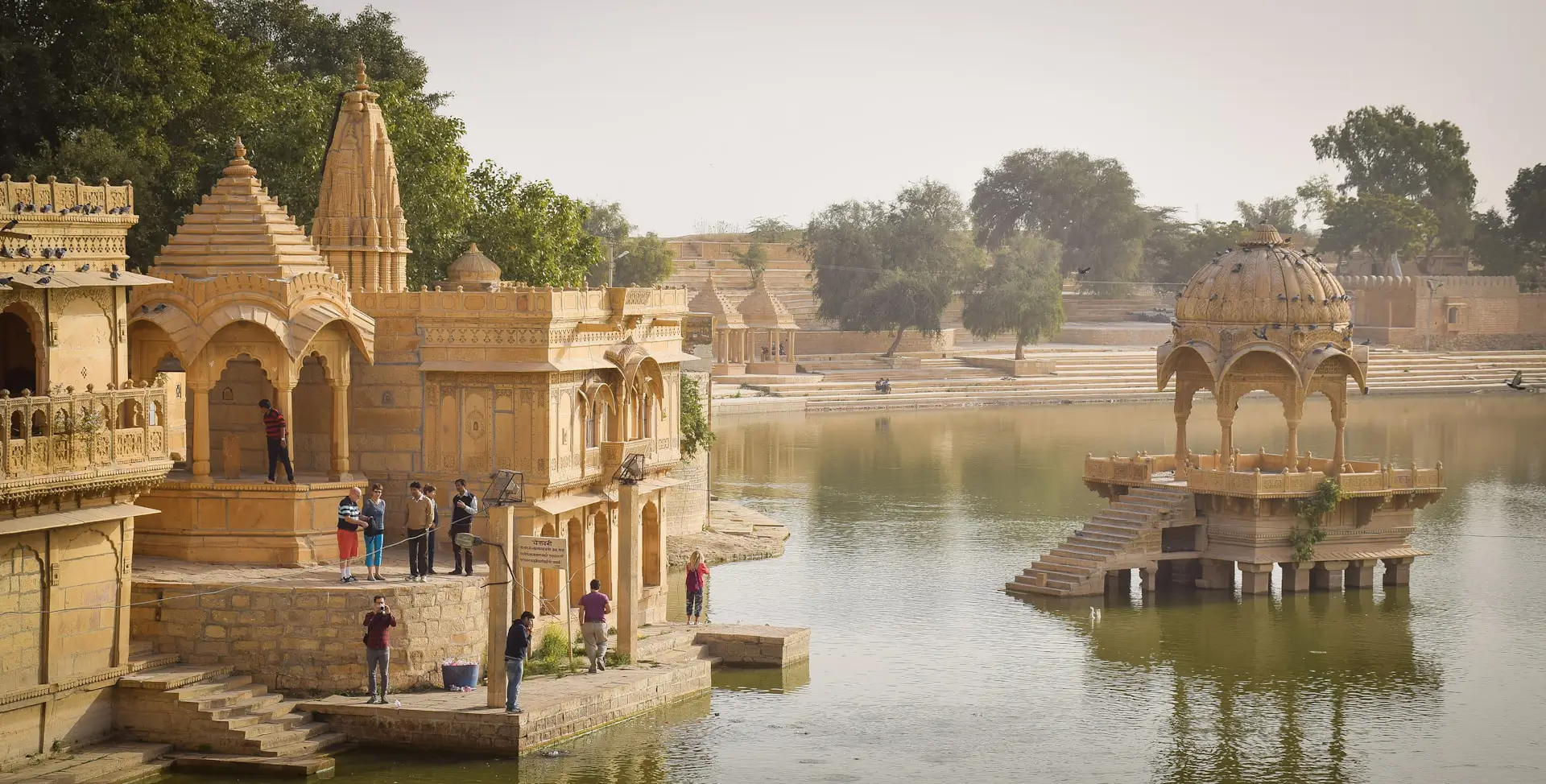The Indus Valley Civilization: A Glimpse into Ancient India’s Glorious Past

The Indus Valley Civilization (IVC), also known as the Harappan Civilization, was one of the most advanced and prosperous cultures of the ancient world. Flourishing between 3300 BCE to 1300 BCE, this remarkable civilization spanned parts of present-day India, Pakistan, and Afghanistan. Known for its sophisticated urban planning, impressive architecture, and advanced drainage systems, the IVC was a pinnacle of prehistoric society.
The cities of the Indus Valley were meticulously planned, with well-organized streets, efficient sewage systems, and multi-storied houses built using standardized bricks. These settlements showcased remarkable craftsmanship in pottery, jewelry, and bead-making, indicating a society with thriving trade networks. The Indus people also developed a unique script that remains undeciphered to this day, adding an air of mystery to their civilization.
The civilization’s economy was heavily reliant on agriculture, trade, and craftsmanship. The presence of seals, weights, and measuring tools suggests a complex economic structure with trade links extending to Mesopotamia, Persia, and other parts of Central Asia. Despite its grandeur, the Indus Valley Civilization mysteriously declined around 1900 BCE, leaving behind a rich legacy of archaeological wonders.
Among the many archaeological sites unearthed, here are 12 famous sites from the Indus Valley Civilization, ranked from the largest to the smallest:
12 Major Sites of the Indus Valley Civilization
1. Rakhigarhi
Rakhigarhi, located in Haryana, India, is the largest known site of the Indus Valley Civilization. Spanning over 550 hectares, this site reveals a well-planned settlement with paved roads, drainage systems, and multi-roomed houses. Excavations have uncovered pottery, jewelry, terracotta figurines, and burial sites. Rakhigarhi offers significant insights into Harappan social structure, including evidence of class divisions and trade links. It flourished between 3000 BCE – 1900 BCE, playing a crucial role in the civilization’s expansion. Rakhigarhi was discovered in 1963 by Suraj Bhan. Subsequent excavations, particularly by the Archaeological Survey of India
- Size: 550 hectares
- Famous For: Largest known IVC site, advanced drainage systems
- Time Period: 3000 BCE – 1900 BCE
- Location: Hisar district, Haryana, India
- Key Findings: Terracotta figurines, jewelry, and evidence of social structure
2. Mohenjo-daro
A UNESCO World Heritage Site, Mohenjo-daro, situated in Sindh, Pakistan, is one of the most prominent IVC sites, known for its impressive urban planning and sanitation systems. The site features the iconic Great Bath, a sophisticated drainage network, and granaries. Dating back to around 2600 BCE – 1900 BCE, Mohenjo-daro provides evidence of organized governance, social hierarchy, and thriving trade. Excavations revealed seals, beads, and bronze statues, reflecting the craftsmanship of the era. The site’s layout showcases an advanced understanding of civil engineering. Mohenjo-daro was discovered in 1922 by R.D. Banerji.
- Size: 240 hectares
- Famous For: Great Bath, sophisticated drainage system
- Time Period: 2600 BCE – 1900 BCE
- Location: Sindh, Pakistan
- Key Findings: Seals, pottery, and bronze statues
3. Harappa
Harappa, located in Punjab, Pakistan, is another significant Indus Valley site that thrived between 2600 BCE – 1900 BCE. It features well-structured citadels, granaries, and distinct burial practices. Harappa is renowned for its characteristic Harappan seals, terracotta figurines, and pottery. The site’s discovery played a pivotal role in identifying the broader Indus Valley Civilization. Findings such as copper tools, beads, and jewelry indicate a prosperous trade network and skilled craftsmanship within the settlement. Harappa was first noticed by Charles Masson in 1826, but formal excavations began in 1920 under the leadership of Daya Ram Sahni.
- Size: 150 hectares
- Famous For: Granaries, citadel structures
- Time Period: 2600 BCE – 1900 BCE
- Location: Punjab, Pakistan
- Key Findings: Seals, terracotta figurines, and burial sites
4. Dholavira
Dholavira, located in the Kutch district of Gujarat, India, is one of the most prominent Harappan sites, known for its unique water conservation system. Spread over 100 hectares, the city is divided into distinct sections, including a citadel, middle town, and lower town. Its sophisticated reservoir system demonstrates advanced engineering skills, crucial for surviving the arid region. Dating back to 2650 BCE – 1900 BCE, Dholavira also yielded stone inscriptions, pottery, and jewelry, providing valuable insights into the Indus Valley’s social and economic structure. Dholavira was discovered in 1967-68 by J.P. Joshi.
- Size: 100 hectares
- Famous For: Water reservoirs and dams
- Time Period: 2650 BCE – 1900 BCE
- Location: Kutch, Gujarat, India
- Key Findings: Stone inscriptions, jewelry, and large reservoirs
5. Ganeriwala
Ganeriwala, situated in the Cholistan Desert of Punjab, Pakistan, is a large yet less explored Indus Valley site. Covering approximately 80 hectares, it is believed to have been a major trade and production center. Excavations have uncovered pottery, beads, and bricks, indicating a well-developed settlement. Flourishing around 2600 BCE – 1900 BCE, Ganeriwala’s strategic location suggests it played a crucial role in linking trade routes across the Indus Valley region. Ganeriwala was discovered in 1975 by Rafique Mughal.
- Size: 80 hectares
- Famous For: Potential major trade hub
- Time Period: 2600 BCE – 1900 BCE
- Location: Punjab, Pakistan
- Key Findings: Pottery, bricks, and trade relics
6. Kalibangan
Kalibangan, located in Rajasthan, India, is known for its unique fire altars and evidence of ploughed fields, reflecting early agricultural practices. Spanning about 60 hectares, Kalibangan flourished between 2900 BCE – 1900 BCE. The site revealed mud-brick fortifications, pottery, and artifacts that showcase Harappan lifestyle and rituals. Distinctively, Kalibangan’s layout features a separate citadel and residential area, emphasizing social organization and town planning in the Indus Valley Civilization. Kalibangan was discovered in 1953 by Amalananda Ghosh.
- Size: 60 hectares
- Famous For: Fire altars, early agricultural tools
- Time Period: 2900 BCE – 1900 BCE
- Location: Rajasthan, India
- Key Findings: Ploughed field remains, beads, and bangles
7. Banawali
Banawali, located in Haryana, India, is a significant Indus Valley site known for its fortified structure and distinct Harappan pottery. Spread across 55 hectares, Banawali reveals evidence of pre-Harappan and mature Harappan phases. Excavations have uncovered terracotta figurines, beads, and jewelry, showcasing its artistic significance. The presence of defensive walls suggests the site played a strategic role, possibly as a trade hub or administrative center, between 2600 BCE – 1900 BCE. Banawali was discovered in 1974 by R.S. Bisht.
- Size: 55 hectares
- Famous For: Defensive walls and pottery
- Time Period: 2600 BCE – 1900 BCE
- Location: Haryana, India
- Key Findings: Terracotta figurines, beads, and pottery
8. Lothal
Lothal, situated in Gujarat, India, is renowned for its remarkable dockyard, proving the Indus Valley Civilization’s expertise in maritime trade. Spanning approximately 50 hectares, Lothal thrived between 2400 BCE – 1900 BCE. Excavations revealed bead-making workshops, seals, and weights, highlighting its role as a trading and industrial hub. Artifacts like rice husks and pottery further suggest strong agricultural and trade links with regions like Mesopotamia. Lothal was discovered in 1954 by S.R. Rao.
- Size: 50 hectares
- Famous For: Dockyard and bead-making industry
- Time Period: 2400 BCE – 1900 BCE
- Location: Gujarat, India
- Key Findings: Seals, ornaments, and rice husk evidence
9. Surkotada
Surkotada, located in Gujarat, India, is notable for providing the first evidence of horse remains in the Indus Valley Civilization. Covering about 40 hectares, Surkotada flourished between 2100 BCE – 1900 BCE. The site is characterized by mud-brick fortifications and defensive walls. Excavations uncovered pottery, terracotta figurines, and animal bones, indicating active trade, craftsmanship, and domestication practices. Surkotada was discovered in 1964 by J.P. Joshi.
- Size: 40 hectares
- Famous For: Horse bones and defensive walls
- Time Period: 2100 BCE – 1900 BCE
- Location: Gujarat, India
- Key Findings: Pottery, animal bones, and jewelry
10. Kot Diji
Kot Diji, located in Sindh, Pakistan, is an important pre-Harappan site that later integrated into the mature Harappan phase. Spread over 30 hectares, Kot Diji thrived between 3300 BCE – 1900 BCE. The site revealed well-built fortifications, pottery, and artifacts such as clay figurines. Kot Diji’s early structures provide crucial insights into the urban evolution of the Indus Valley Civilization. Kot Diji was discovered in 1955 by F.A. Khan.
- Size: 30 hectares
- Famous For: Fortified walls and pottery
- Time Period: 3300 BCE – 1900 BCE
- Location: Sindh, Pakistan
- Key Findings: Clay figurines and pottery
11. Chanhu-daro
Chanhu-daro, situated in Sindh, Pakistan, is known for being an industrial hub, specializing in bead-making and craftsmanship. Spanning approximately 25 hectares, the site flourished between 2600 BCE – 1900 BCE. Excavations revealed copper tools, pottery, and seals, indicating a thriving economic center with strong trade connections. Notably, Chanhu-daro is the only Harappan site without fortifications. Chanhu-daro was discovered in 1931 by Ernest Mackay.
- Size: 25 hectares
- Famous For: Bead-making industry
- Time Period: 2600 BCE – 1900 BCE
- Location: Sindh, Pakistan
- Key Findings: Beads, copper tools, and pottery
12. Sutkagan Dor
Sutkagan Dor, located in Balochistan, Pakistan, is the westernmost Indus Valley site, situated near the Iranian border. Covering 20 hectares, this site was active between 2600 BCE – 1900 BCE. Excavations have uncovered fortified walls, pottery, and trade-related artifacts, suggesting Sutkagan Dor played a crucial role in facilitating trade between the Indus Valley and Persian Gulf regions. Sutkagan Dor was discovered in 1875 by Major Edward Mockler, who conducted small-scale excavation. In year 1928, Aurel Stein visited the area as part of his Gedrosia tour, and carried out further digs
- Size: 20 hectares
- Famous For: Coastal trade connections
- Time Period: 2600 BCE – 1900 BCE
- Location: Balochistan, Pakistan
- Key Findings: Fortified walls and trade relics
Conclusion
The Indus Valley Civilization stands as a testament to early human ingenuity, urban planning, and trade expertise. Each site offers a unique glimpse into this ancient civilization’s lifestyle, culture, and achievements. As archaeologists continue to explore, new discoveries are constantly reshaping our understanding of this remarkable period in history.
Recent On cloudxtech
Beginner Frontend Projects with HTML, CSS, JS, and jQuery – Free to Use and Download
August 11, 2025 • 4 minute(s) read
Best Chrome Extensions for Web Developers in 2025
June 12, 2025 • 3 minute(s) read
JN Form Validation: Simplify Client-Side Validation with Ease
May 22, 2025 • 4 minute(s) read
🌊 The Indus Waters Treaty: A Historic Pact and its Dramatic Suspension in 2025
April 27, 2025 • 5 minute(s) read
🏋️♂️ The Ultimate Guide to Biceps: Anatomy, Training, and Growth Hacks
April 27, 2025 • 3 minute(s) read
🏋️♂️ The Ultimate Chest Training Guide: Anatomy, Tips & Workouts
April 27, 2025 • 3 minute(s) read













